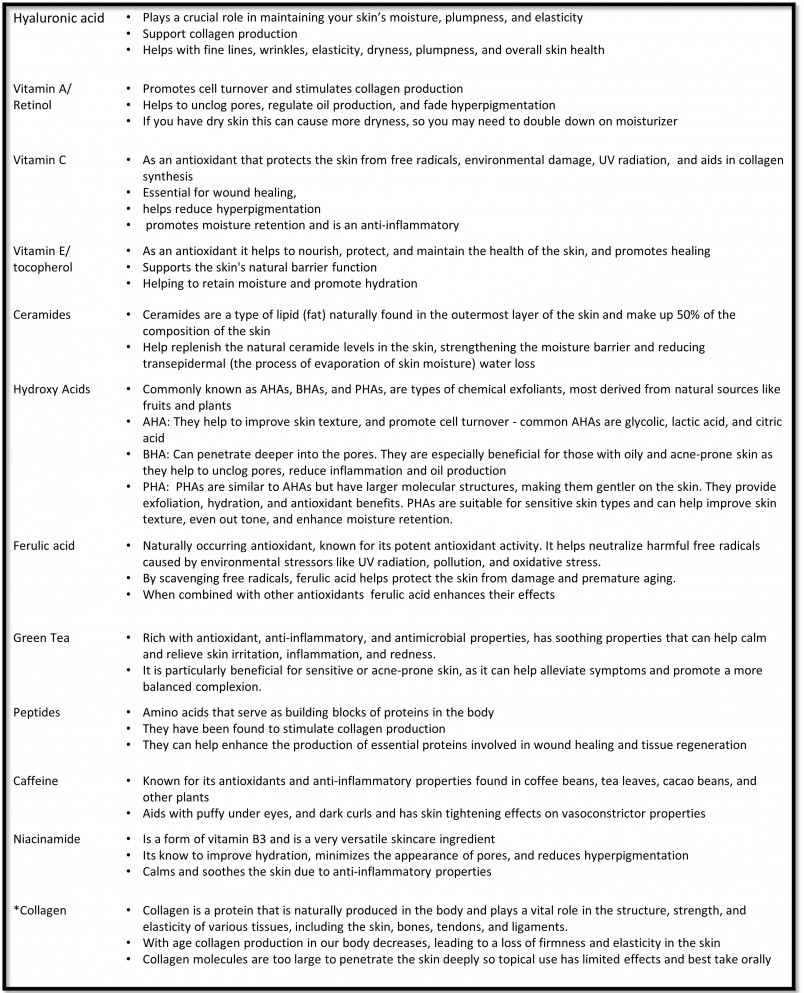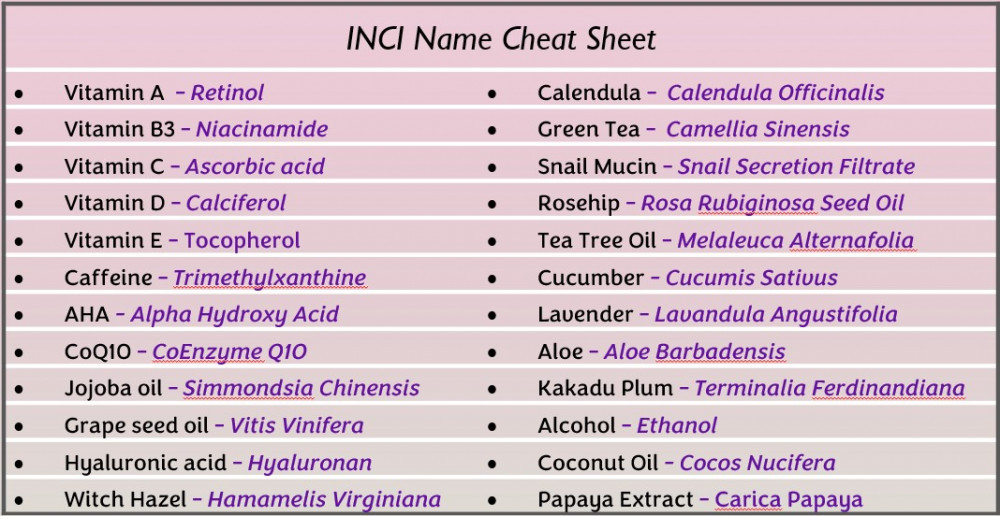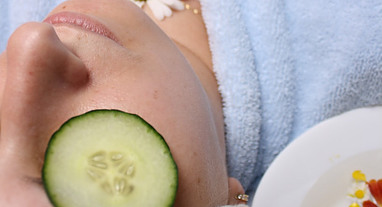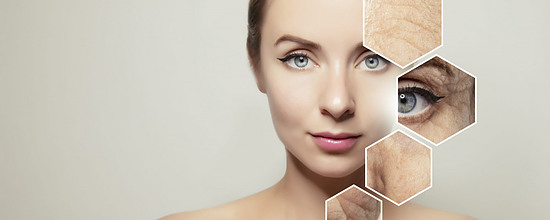
What IS in Anti-aging Skin Care Products That Make Them Effective?

In my previous article, we explored the identification of skin types, the aging processes that affect our skin, and what ingredients to look for when choosing your skincare regimen. Now, we are going to go a little more in-depth into what is in anti-aging skin products and their efficacy through an ingredient breakdown and an understanding of how to interpret product labels. Then, we’ll go into what to look for and what to look out for. Additionally, we will address the question of how many skincare products to use, and what the best order of application is for optimal absorption and results.
Get to Know Common Ingredients…
Let’s begin by examining the ingredients commonly found in anti-aging skincare products and their specific benefits. By understanding the role of these ingredients, you can make informed choices when selecting your skincare regimen.

To find GREAT DEALS on these ingredients, click here for the best anti-aging skin care!
Understanding the functions of skincare ingredients may seem overwhelming at first, but it is essential for finding the ideal skincare products for your needs. By familiarizing yourself with the roles and benefits of different ingredients, you can make informed decisions and create an effective skincare routine tailored to your skin.
How to Decode the Label…
Start with the ingredient list: International Nomenclature Cosmetic Ingredient better known as INCI. INCI names are recognized around the world to identify cosmetic ingredients and are referenced by regulations for product labeling in many countries. The INCI can be found somewhere on the packaging usually on the back or side. Ingredients are commonly listed in descending order of concentration, with the highest concentrations at the top. This means that the first few ingredients have the most significant presence in the product. Focus on identifying key ingredients that align with your specific interests or are recommended for your skin concerns.
Familiarize yourself with “the official” names of ingredients: Some ingredient names can be complex, and scientific-sounding and may make you turn away but it isn’t always a bad thing. For example, vitamin E is also known as tocopherol. Also, it is very common for ingredients to be listed by their botanical names which are in Latin. Below are some common INCI names you will find on labels:

Click here for the best skincare line for aging skin.
The moral of the story is just because it has a big long name doesn’t mean it’s bad for you. If you don’t know what it is… Look it up!

The Dirty Dozen…
The Dirty Dozen is a term usually used for the top fruits/vegetables with pesticide residue present like spinach and strawberries. When it comes to skincare products, there are certain ingredients that some individuals prefer to avoid due to potential concerns. While opinions may vary, here is a list of my “Dirty Dozen” ingredients to look out for:
1. Parabens: Used as a preservative in skincare productsParabens may elevate cellular level damage caused by UV exposure, which may even cause skin cancer. Parabens can also sensitize the skin, causing allergic reactions. Common parabens: methylparaben, ethylparaben, propylparaben, and butylparaben.
2. Phthalates: These chemicals, including dibutyl phthalate (DBP) and diethyl phthalate (DEP), are often found in fragrances and plastics, and may have potential adverse effects on hormonal balance.
3. Sodium Lauryl Sulfate (SLS) and Sodium Laureth Sulfate (SLES): These surfactants can be harsh and may cause skin irritation or dryness in some individuals.
4. Formaldehyde: Ingredients like DMDM hydantoin and diazolidinyl urea can release formaldehyde, a known skin sensitizer, and potential carcinogen.
5. Mineral Oil: Derived from petroleum, mineral oil is sometimes avoided due to concerns about potential occlusion of the skin and potential contamination risks.
6. Synthetic Fragrances: Artificial fragrances can cause allergic reactions or skin sensitivities in some individuals. Look for products labeled “fragrance-free” or with natural fragrances if you have sensitivities.
7. Synthetic Colors: Artificial colors, indicated by FD&C or D&C followed by a number, may potentially cause skin sensitivities or allergic reactions.
8. Toluene: Found in some nail polishes, toluene is a solvent that may pose health risks if inhaled or absorbed in large amounts.
9. Triclosan: This antibacterial agent, commonly found in hand sanitizers and soaps, has raised concerns about potential environmental impacts and the development of antibiotic resistance.
10. Ethanolamines (MEA/DEA/TEA): Used as emulsifiers or pH adjusters, these compounds may cause skin irritation in some individuals.
11. Oxybenzone: A chemical sunscreen ingredient, oxybenzone has raised concerns about potential hormone disruption and environmental impact.
12. Silicones: While silicones provide a smooth texture and temporary skin-smoothing effect, some individuals prefer to avoid them due to concerns about clogged pores or potential environmental impact.
It’s important to note that the impact of these ingredients can vary based on individual sensitivities and the specific concentration used in products. If you have concerns or sensitivities, consulting with a dermatologist or skincare professional can provide personalized guidance and help you make informed decisions about the products you choose.
Your Skin, Your Journey…
Understanding the ingredients in anti-aging skincare products is crucial for making informed choices about our skincare regimen. By delving deeper into the composition of these products and learning how to decipher product labels, we gain insight into their efficacy and potential benefits. Equipped with this knowledge, we can identify key ingredients that align with our skincare goals and avoid potentially harmful substances. Moreover, we have explored the optimal number of skincare products to use and the recommended order of application for maximum absorption and results.
By following these guidelines and tailoring our skincare routine to our individual needs, we can pave the way for healthier, more youthful-looking skin.
Please feel free to message me with great ideas or to just say Hola!!
-Maricella



2 Comments
Dave
Thank you for sharing this informative blog post about anti-aging skincare products! As someone in my 40s, I’ve become increasingly interested in maintaining youthful and healthy-looking skin. It’s fascinating to learn about the various ingredients and techniques that can help in this endeavor.
Over the years, I’ve experimented with different anti-aging skincare products and have seen firsthand the impact they can have on the appearance and texture of my skin. One key ingredient that I’ve found particularly effective is retinol. Its ability to stimulate collagen production and reduce the appearance of fine lines and wrinkles has made it a staple in my skincare routine.
Another ingredient that has shown promising results for me is hyaluronic acid. Its remarkable ability to retain moisture has helped plump and hydrate my skin, giving it a more youthful and radiant look. I’ve also noticed improvements in skin elasticity and firmness, which are essential for maintaining a youthful appearance.
In addition to incorporating targeted ingredients into my skincare routine, I’ve also learned the importance of overall skin health. This includes practices like staying hydrated, protecting my skin from sun damage with SPF, and maintaining a healthy lifestyle through regular exercise and a balanced diet.
Maricella
That’s Awesome Dave!!! Thank you for sharing your experiences, you’re on the right track!